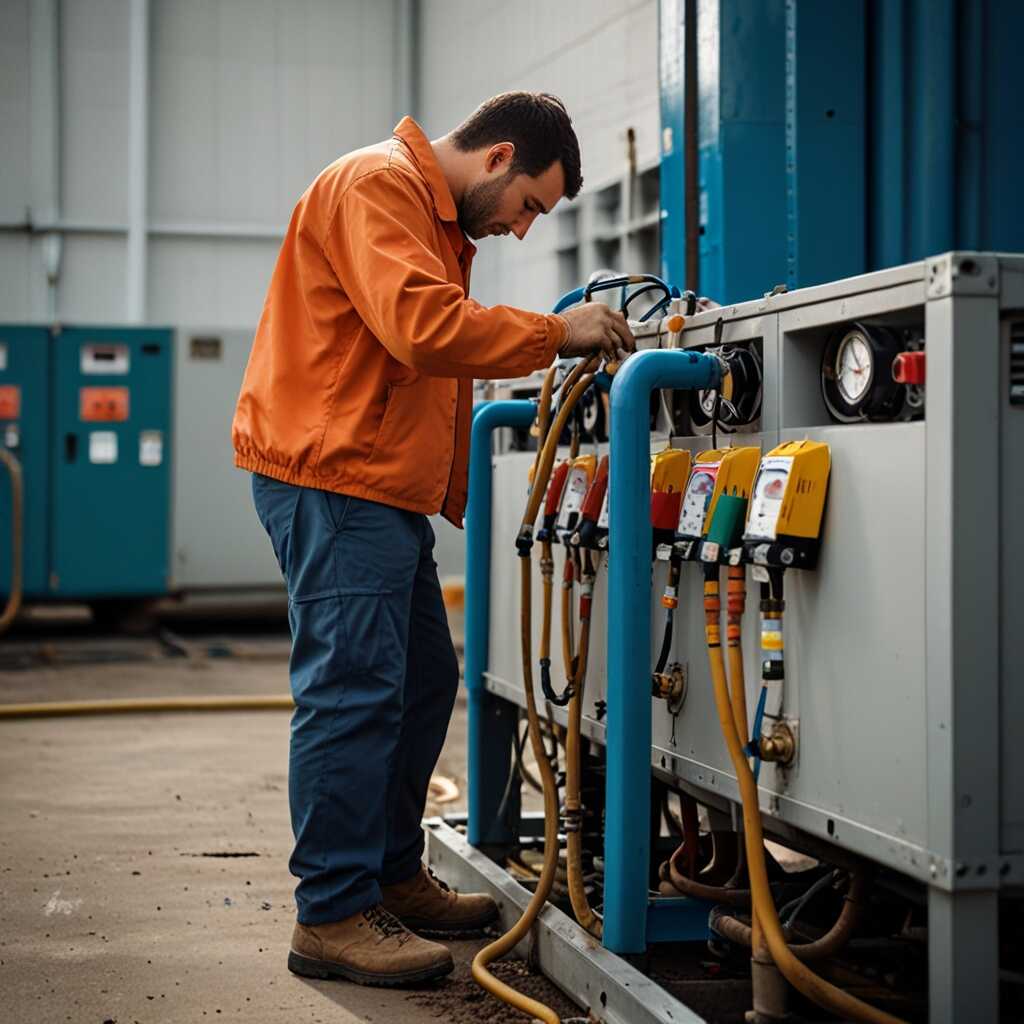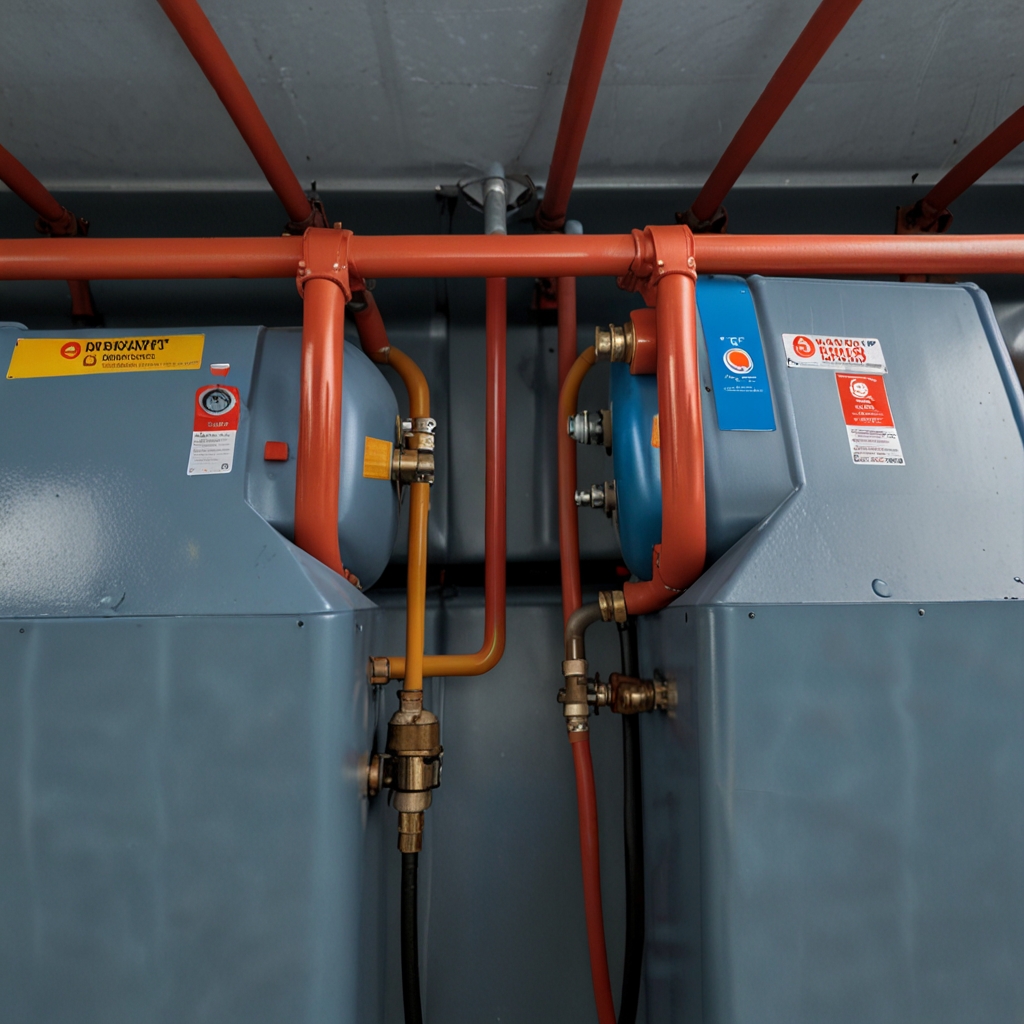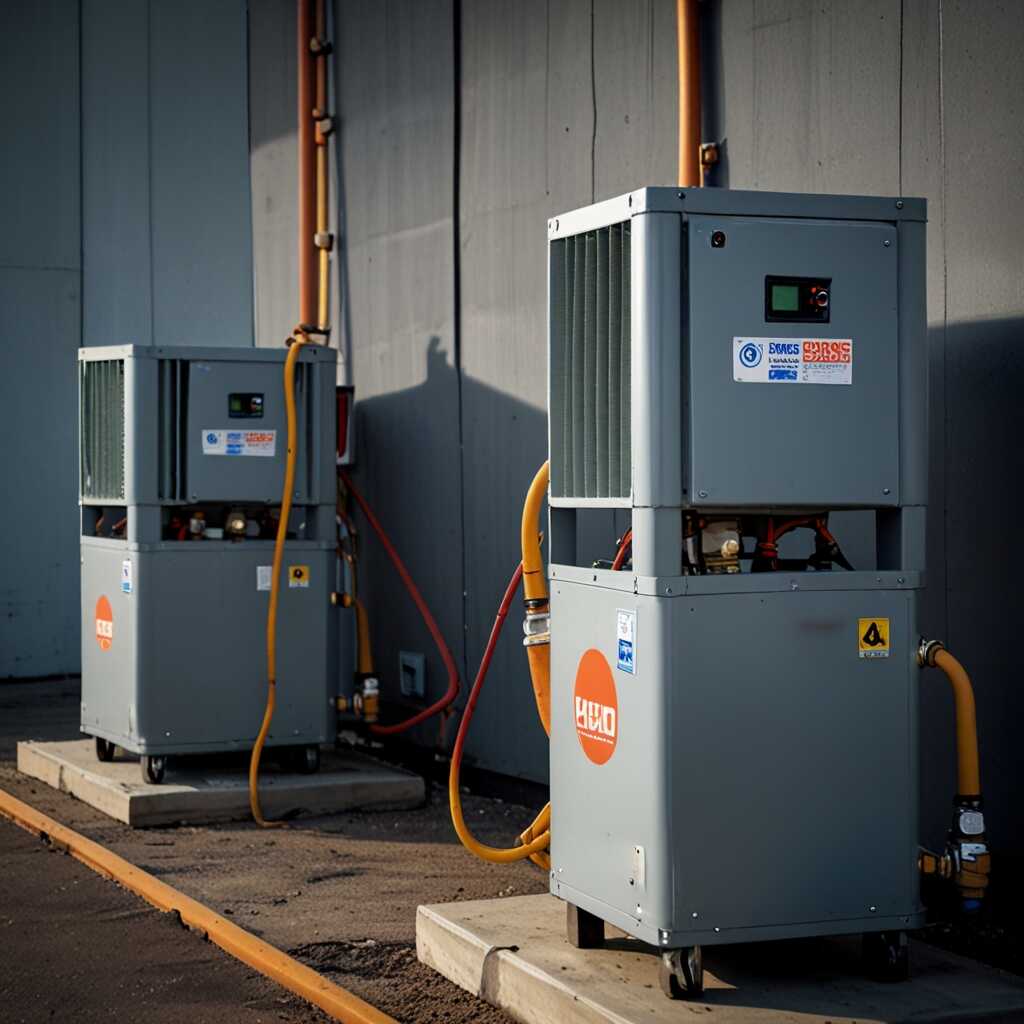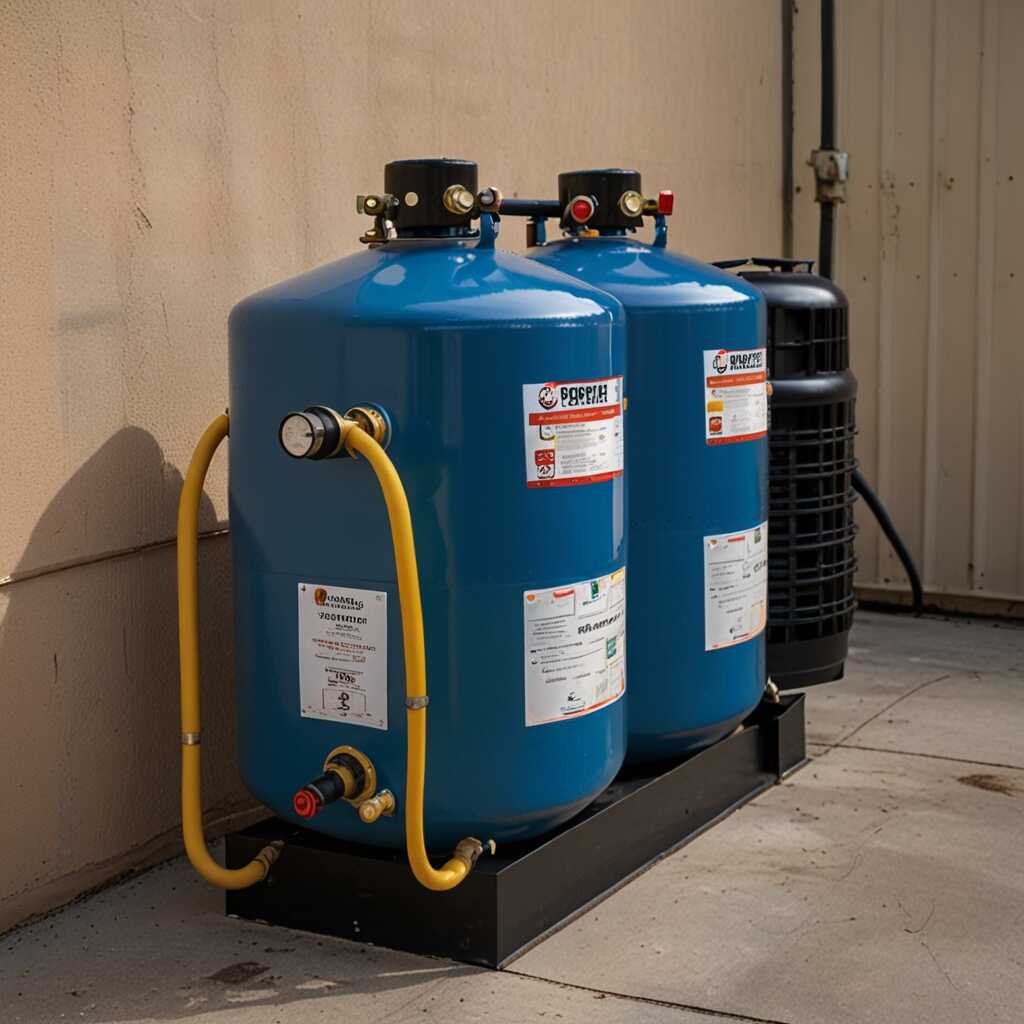Vapor injection significantly improves refrigerant recovery efficiency and performance in HVAC systems. This technology allows recovery machines to extract more refrigerant and operate more effectively. At Refrigerant Recovery Pro, we focus on the advantages of vapor injection for HVAC technicians and refrigerant recovery specialists. Understanding these improvements will guide you in selecting the right equipment and adopting best practices.
Introduction to Vapor Injection Technology in Refrigerant Recovery
Vapor injection technology in refrigerant recovery machines is a pivotal advancement for HVAC professionals. It allows for the recovery of refrigerants in vapor form, enhancing the refrigerant recovery efficiency significantly. This technology improves the performance of recovery machines by enabling them to pull refrigerant more effectively, even from low-pressure environments. By using vapor injection, technicians can achieve faster recovery times and better recovery rates, which is critical for meeting environmental regulations. In fact, studies reveal that vapor injection can provide a percentage increase in efficiency of over 30% for refrigerant recovery systems compared to conventional methods.
Key Benefits of Vapor Injection Technology
Vapor injection technology offers numerous key benefits for refrigerant recovery systems. It ensures that HVAC professionals are equipped with tools that can handle diverse refrigerants effectively. This technology allows for improved reliability and durability in recovery machines, ultimately enhancing overall performance. The design of vapor injection systems enables them to manage low-pressure recoveries better than traditional systems, ensuring rapid refrigerant extraction. Moreover, this technology facilitates superior recovery performance by reducing the risk of contaminants, improving compliance with regulatory standards. By utilizing vapor injection, HVAC professionals can expect more efficient and effective operations.
How Vapor Injection Mechanism Enhances Performance
Vapor injection in refrigerant recovery machines uses a unique system that injects vapor into the recovery cycle. This process significantly enhances refrigerant recovery performance. Vapor injection helps maintain high pressure and improves the flow rate of refrigerant. It increases efficiency by enabling machines to extract more refrigerant in less time. This method is designed to outperform traditional methods that primarily rely on liquid recovery. Vapor injection mechanisms provide better performance by ensuring that any vapor present is captured. Compared to conventional methods, vapor injection systems can achieve up to a 30% increase in efficiency, thereby delivering significant advantages for HVAC technicians.
Benefits of Vapor Injection Over Traditional Recovery Methods
Vapor injection technology offers various benefits over traditional refrigerant recovery methods. Traditional systems primarily focus on liquid recovery, often leaving substantial amounts of vapor behind. Vapor injection enhances the recovery process, ensuring that more refrigerant is collected and reducing waste. It uses proven methods to increase pressure, allowing the machine to handle various refrigerants efficiently. Studies show that vapor injection systems can lead to more reliable performance while decreasing recovery time. The easy-to-use features in these systems make them favorable for HVAC technicians. Research indicates vapor injection machines deliver better results and reduce environmental impact by ensuring efficient refrigerant management.

Key Benefits of Vapor Injection in Refrigerant Recovery Operations
The main efficiency gains from using vapor injection technology in refrigerant recovery include faster recovery times and higher recovery rates. Vapor injection systems provide enhanced reliability, enabling more complete extraction of refrigerants. This technology helps reduce wasted refrigerants, resulting in better performance and less environmental impact. By utilizing vapor injection, HVAC technicians can achieve refrigerant recovery rates that are up to 95%, significantly higher than traditional methods. This advancement not only improves operational efficiency but also enhances compliance with environmental regulations.
How Vapor Injection Technology Enhances Refrigerant Recovery Processes
Vapor injection technology enhances refrigerant recovery processes by delivering impressive efficiency gains and improving overall performance. It does this by using low-pressure vapor to help extract refrigerants from systems more effectively. Tests show that vapor injection can handle large volumes of refrigerants, making recovery operations much faster. Technicians report that this method reduces the time spent on each recovery job while ensuring high recovery efficiency. This results in reduced environmental impact and compliance with strict regulations, making vapor injection an essential feature for modern HVAC systems.
Impressive Statistics Related to Recovery Technology
- Vapor injection systems can boost recovery efficiency by up to 40% compared to traditional methods.
- These systems can reclaim refrigerants at speeds of 3-5 times faster.
- Using vapor injection may reduce total recovery time by 30-50%.
- Over 80% of professionals report improved performance with vapor technology.
- Systems can often recover more than 90% of the refrigerant in a single cycle.
- Investment in vapor injection equipment can lead to a return on investment within the first year.
- The longevity of vapor injection machines often exceeds 10 years with proper maintenance.

Identifying Common Challenges in Refrigerant Recovery Practices
HVAC technicians often encounter various obstacles during refrigerant recovery. Common challenges include low recovery rates, inefficient equipment operation, and environmental compliance issues. Traditional recovery methods may slow down the process, resulting in lost time and resources. Vapor injection technology directly addresses these issues by enhancing efficiency and performance. It allows for faster recovery by handling low-pressure refrigerant more effectively, ensuring better results while staying within regulatory guidelines. As technicians become familiar with this technology, their capability to overcome recovery challenges improves significantly.
How Vapor Injection Enhances Recovery Performance
Vapor injection equipment includes built-in features that significantly impact refrigerant recovery performance. This technology provides a reliable means of quickly recovering refrigerants, which is crucial in high-demand situations. For instance, systems designed with dual-stage compressors can handle suction pressures more effectively, minimizing recovery time. Reports show that vapor injection systems can achieve a remarkable 30% improvement in recovery efficiency compared to traditional methods. Technicians relying on these advanced features can ensure they are compliant with environmental standards while also saving time and enhancing their overall operational effectiveness.

Best Practices for Maximizing Recovery Efficiency
To improve refrigerant recovery efficiency with vapor injection technology, HVAC technicians should focus on critical techniques. These include pre-cooling of the condenser before recovery, monitoring system pressure, using high-quality hoses, and implementing a strategic recovery process. Vapor injection systems provide enhanced efficiency since they allow for a significant reduction in recovery time. Consider durability, performance, and reliability when selecting recovery equipment. Technicians should consult reviews to determine the most effective models available. Research shows that vapor injection systems can achieve recovery efficiency improvements of up to 40% compared to traditional methods.
Essential Techniques for Vapor Injection Systems
Implementing essential techniques for vapor injection systems can significantly boost refrigerant recovery processes. Start by ensuring the system is adequately charged to optimize vapor flow. Utilize recovery machines designed with advanced features like variable speed capabilities and automatic shutoff systems to prevent overfilling and maintain efficiency. Regular testing of hoses and connections is crucial to prevent leaks and maintain reliable performance. Training and experience are vital in using these systems effectively. Technicians should continuously review their methods and adapt them based on outcomes to ensure they are utilizing the best practices available.
Advantages of Enhanced Recovery Techniques
- Faster recovery times help technicians complete tasks more efficiently.
- Vapor injection technology yields a higher refrigerant recovery rate.
- Reduced overall operational costs make businesses more profitable.
- More effective moisture removal leads to better component longevity.
- Lower risk of refrigerant leakage promotes compliance with environmental regulations.
- Improved machinery performance means fewer breakdowns and repairs.
- Enhanced accuracy in refrigerant measurements ensures compliance and safety.

Navigating Regulatory Compliance for Refrigerant Recovery Techniques
HVAC technicians must understand the essential regulatory compliance requirements, such as the EPA’s guidelines under the Clean Air Act. These regulations dictate specific practices for refrigerant recovery. Failure to comply can lead to fines and legal issues. Vapor injection technology does align with these regulations. It ensures that refrigerants are managed responsibly while enhancing recovery efficiency. Organizations such as the EPA, EPA-certified techs, and HVAC training schools help ensure adherence to these regulations. The maximum percentage of refrigerant that must be recovered is typically 90-95%, depending on the system type, to meet legal requirements and reduce environmental impact.
Understanding the Role of Vapor Injection in Compliance
Vapor injection technology plays a critical role in achieving compliance with environmental regulations in refrigerant recovery. This innovative method allows for improved recovery efficiency by ensuring maximum refrigerant extraction from the system. Using vapor injection helps collect nearly all refrigerant, often exceeding standard recovery goals. By combining vapor injection with traditional recovery methods, technicians can significantly enhance the reliability and performance of their systems. Additionally, using this technology ensures that HVAC professionals meet compliance standards established by regulatory bodies such as the EPA. When selecting recovery equipment, look for reliable models that feature vapor injection for optimal performance and environmental adherence.
Guidance for Selecting Vapor Injection Recovery Equipment
Choosing the right vapor injection recovery equipment is essential for optimizing recovery efficiency. First, look for machines designed with robust vapor injection features. These enhance performance by enabling faster refrigerant transfer and improving recovery rates. Analyze your operational requirements such as the types of refrigerant you encounter and the volume of extraction needed to make a well-informed selection. Consider reviewing user feedback and expert recommendations on various brands and models to narrow your options effectively.
Key Features of Vapor Injection Machines
When selecting vapor injection recovery machines, focus on critical features for optimal performance. Look for high-quality compressors that ensure reliability and durability under heavy use. Machines should also offer an adjustable vapor injection rate to match different refrigerant types, enhancing recovery efficiency. The best models come with user-friendly interfaces, making them easier to operate. Testing and reviews from expert HVAC technicians can help you determine the most reliable machine. Researching data on performance can guide you to the most effective equipment for your specific needs.
Brands and Their Strengths in Recovery Solutions
- Brand A: Offers durable machines that excel in high-demand environments but can be expensive.
- Brand B: Known for user-friendly designs, making it easy for technicians to operate.
- Brand C: Provides affordable options, but they may not perform as well in commercial settings.
- Brand D: Features models with advanced moisture filtration, supporting best practices in refrigerant recovery.
- Small businesses often prefer compact models for space-saving solutions and cost efficiency.
- HVAC trainers benefit from systems that offer clear guidance on operational best practices.
- Commercial contractors choose powerful models for extensive projects needing high efficiency.
Emerging Trends and Innovations in Refrigerant Recovery
Key advancements in vapor injection technology are reshaping the landscape of refrigerant recovery. This technology greatly enhances refrigerant recovery efficiency by minimizing the time required to recover more refrigerant. Emerging trends show that equipment will become even more efficient, with innovative designs focusing on durability and reliability. HVAC technicians must consider these new features during equipment selection to meet changing standards. Notably, by 2025, refrigerant recovery methods are expected to undergo significant enhancements due to these emerging trends.
Innovative Features of Future Refrigerant Recovery Equipment
Innovative features in future refrigerant recovery equipment will center on enhanced vapor injection capabilities. These improvements ensure that equipment can handle diverse refrigerants with efficiency and performance. New machines will integrate advanced sensors for optimal pressure and temperature controls, ensuring reliable operation. Expert reviews of upcoming models indicate that these innovations will improve recovery speeds and reduce environmental impact. As a result of this research and development, HVAC technicians will have access to quality equipment that meets stringent environmental regulations and operational demands.